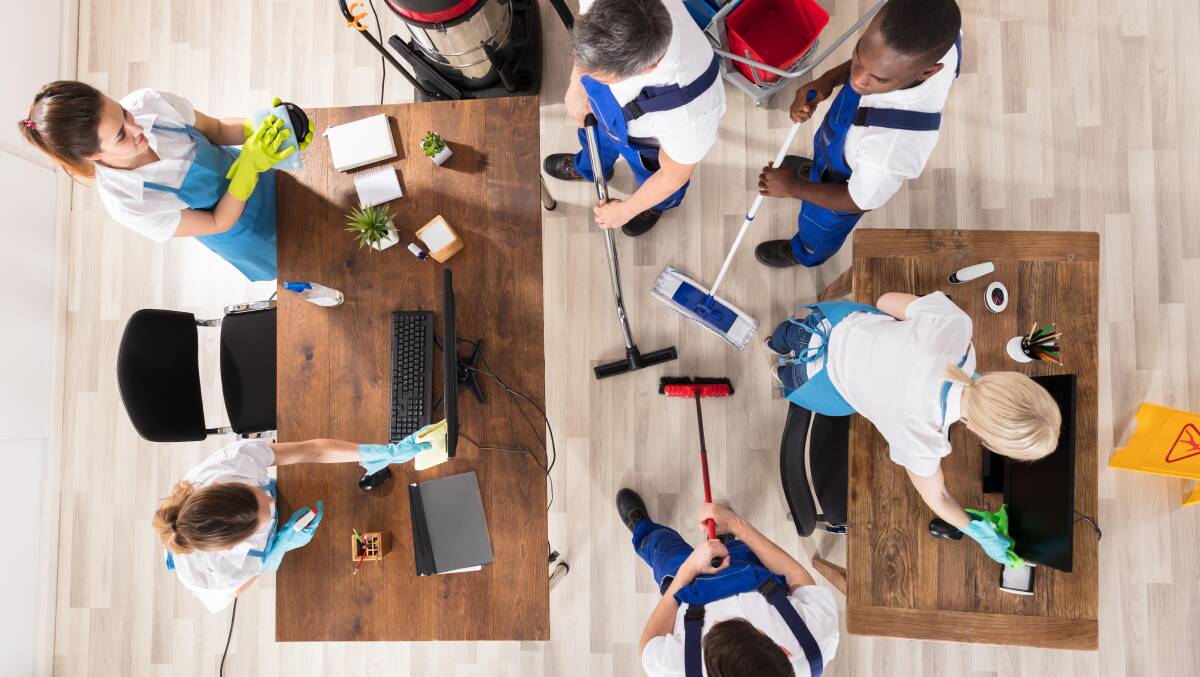It is a topic that is rarely discussed, typically embarrassing and often disgusting yet estimated to cost business billions of dollars - our rapidly deteriorating standards of workplace hygiene.
Subscribe now for unlimited access.
$0/
(min cost $0)
or signup to continue reading

While we have all heard numerous tales of the filthy habits of some of our colleagues, new research has revealed just how dire things really are. Startling revelations include that almost half of the workforce believed they had fallen ill because of poor office hygiene.
And when workers were asked which parts of their work environment they believed were most unhygienic, surprisingly it wasn't the office toilets but the kitchen as well as workstations, especially desk telephones.
Not that office toilet habits are clean. A surprising survey finding is that only 60 per cent of workers admit to washing their hands after doing their business - you would expect a whole lot more would throw soap on their hands, right?
Ask Australian workers to share their very worst experiences of workplace hygiene and the stories they will dish up are as dirty as old bathwater.
Take mould-infested and long-forgotten lunches in the office fridge, the grimy shared office keyboard, the colleague distributing her birthday cake and licking her fingers in between cutting and plating each slice, and the worker who clears his nose and throat - and dispenses the discharge in the office kitchen sink.
Think also about the raft of filthy habits relating to toilet etiquette. Observe the worker, fresh out of the toilet cubicle, who before washing his dirty mitts shakes a colleague's hand, or the one who multi-tasks by enjoying his ham and salad roll while sitting on the throne - and let's not mention the use of mobile phones at the urinal.
Our grubby workplace habits are thought to cost Australian business more than $5 billion annually in lost productivity.
Speaking of smartphones, while bringing them into the office toilet might enable a well-deserved break from the work routine, the device will without fail end up with traces of, well, bodily fluids on it. This is less than ideal when you consider the reservoir of germs that is your smartphone has access to some of the most vulnerable entry points for bacteria, such as your mouth and ears.
Some of the filthiest places in your workplace are often those areas you would least expect. For example, an office desk surface is thought to contain 400 more germs than a toilet seat. And what about the photocopier, vending machine and elevator buttons, fridge handles and doorknobs, office mugs and the kitchen sponge that is used to clean them all - all of these pose a potential hygiene horror.
And here is the kicker. Our grubby workplace habits are thought to cost Australian business more than $5 billion annually in lost productivity because office workers take around two days off sick each year as a result of poor office hygiene.
Many bosses simply wash their hands of workplace hygiene by failing to communicate the importance of a clean workplace with staff, ignoring the need to provide adequate hand sanitisation in the office, neglecting to institute regular and thorough office cleaning regimes, and being reluctant to redress individual workers who are known for their slovenly ways.
And with many workers ignoring food and beverage spillages in the workplace - which they would dive on if it happened in their own homes - some workers need to ditch the mistaken belief that a dirty office should simply be left to the cleaner to fix.
So the next time you need to use the office toilet, consider leaving your smartphone on the charger - you will be doing yourself and your colleagues a favour when it comes to reducing office health risks.
And it might just stop that family of bacteria taking up residence in your cracked mobile phone screen.
- Professor Gary Martin is Chief Executive Officer, the Australian Institute of Management WA

